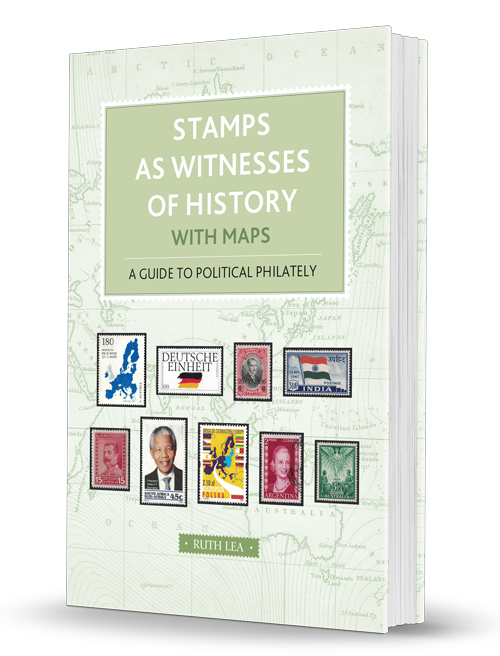Ruth Lea launches new book – Stamps as Witnesses of History

With the recent announcement by Royal Mail that it will no longer recognise postage stamps that do not have a barcode, you would be forgiven into thinking that the future of the stamp was in danger. But this is far from the case. Since the first Penny Black stamp was issued in 1840, the number of stamp collectors worldwide has grown to some 60 million. In fact, rare stamps can have a huge value and attract the interest of serious investors.
Stamps are much more than just a receipt for the payment of postage, over the centuries they have evolved into a unique art form and a window into the culture and events of some 132 countries. Of course, there are many books which describe each stamp in detail, but, until now, there has not been a book that look at each country and the events in history that were considered important enough for a stamp to be created to remember them by. Ruth Lea’s impressive 634 page, full-colour book, “Stamps as Witnesses of History” – a guide to Political Philately, is the first book that looks at stamps in this way, and so comprehensively. It is an essential reference book for every philatelist.
Says Ruth “I originally wrote this book because I find stamps fascinating. My mother was an enthusiastic collector, stimulated by her inheritance of her grandfather’s album of 19th century stamps, which he had dated 1869 when he was in his teens. He had carefully attributed the stamps to their correct countries which were all written up in a most elegant hand. I have inherited my mother’s collection and my great-grandfather’s little album. They are amongst my most treasured possessions. Stamps fascinate me because they can be seen as witnesses of history, insofar as stamps can witness anything. The Sardinian stamp that my great-grandfather stuck in his album bore witness to a country that existed prior to the unification of Italy. And his stamps from the North German Confederation witnessed major stepping-stone towards the unification of Germany. Stamps are tangible pieces of historical evidence.
This volume updates my book “Stamps as witnesses of history” (Filament Publishing, 2018), providing key maps, with supporting tables. It is not a book about the history of stamps as such. It is a book about how stamp issues since Rowland Hill invented the first adhesive postage stamp in 1840 have “witnessed” the seismic global political developments over the years. It is a guide to political philately, which aims to show how stamp issues have reflected the key political events over the years. The boundary changes noted in the maps primarily focus on the “permanent” transfer of territories from one sovereign state to another since the mid-19th century, with the shifting boundaries during temporary occupations largely, though not entirely, omitted.
The book is arranged geographically, covering the whole world. For each country entry, the major political developments are listed chronologically, interspersed by key maps and relevant stamps issues.






